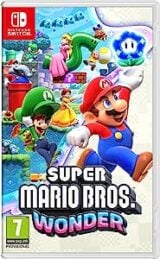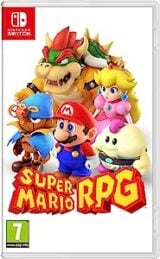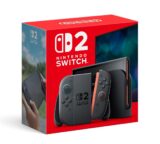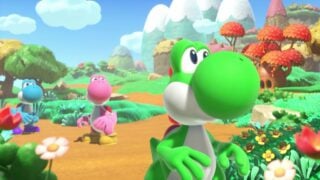The Complete History of Mario Kart games
Celebrating the 30th anniversary of Mario Kart with a look at every game and spin-off
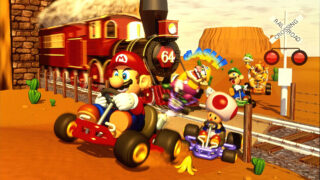
It’s hard to believe that there was once a time when the karting genre didn’t exist.
Over the past three decades we’ve seen countless IPs turned into ensemble racing affairs, to varying levels of success.
From gaming mainstays like Sonic, Crash Bandicoot and Final Fantasy to more unusual licenses like Power Rangers, The Muppets and Crazy Frog, there have been hundreds of karting games over the years all too happy to jam in a bunch of well-loved characters.
None of this would have been the case had it not been for the success of Super Mario Kart, which turns 30 years old on the day this article was published (August 27, 2022).
The enormous success of Mario Kart led not only to the inevitable sequels, but to the birth of an entirely new genre that continues to see new imitators to this day.
To celebrate all things Mario Kart, then, we’ve decided to recap every game in the series, from the main entries to the spin-offs.
Buckle up, then, and 3, 2 (hold the accelerator now), 1, let’s begin.
Super Mario Kart
- Original release – 27 August 1992
- Format – SNES
- Players – 2
- Characters – 8
- Tracks – 20 race, 4 battle
- Character debuts – Mario, Luigi, ‘Princess’, Yoshi, Bowser, Donkey Kong Jr, Koopa Troopa, Toad
- Gimmicks – The whole concept of an ensemble kart racing game
It speaks volumes that many of the core elements of Super Mario Kart remain in the series 30 years later.
The 50cc, 100cc and 150cc speed settings, which double as AI difficulty levels. The Grand Prix setup with its series of races and points totals.

The fact that a green shell goes straight, a red one homes in, a Star makes you invincible and increases your speed, a Mushroom gives you a speed boost.
And, of course, the fact that smacking your pal in the backside with a shell in Battle Mode is hugely satisfying.
That Nintendo got so much right in its first attempt maybe explains why Super Mario Kart wasn’t just a one-and-done spin-off like Wario’s Woods or Yoshi’s Safari, and ended up spawning one of the industry’s most popular genres.
Mario Kart 64
- Original release – 14 December 1996
- Format – Nintendo 64
- Players – 4
- Characters – 8
- Tracks – 16 race, 4 battle
- Character debuts – Donkey Kong, Wario
- Gimmicks – Four-player multiplayer, blue shell, drift boost
When Nintendo first publicly showed off the Nintendo 64 at the Shoshinkai Software Exhibition show in Japan in 1995, it also revealed some of the games planned for the console’s launch.
Mario Kart R, which would replace the SNES’s Mode 7 courses with fully polygonal ones, ultimately wasn’t ready in time for day one, but when it finally released as Mario Kart 64 it proved to be more than worth the wait.
Completely replacing the SNES game’s engine, Mario Kart 64 used a trick that was common in early 3D games – because the N64 could only handle a certain number of polygons, only the environments were polygonal.

The characters, meanwhile, were pre-rendered CG sprites (similar to Donkey Kong Country), which changed depending on which direction you viewed them from, to give the illusion that they were proper 3D.
Mario Kart 64 also introduced a number of new ideas that quickly became series mainstays. By waggling the stick while drifting, for example, you could build up a speed boost, a concept that remains to this day (minus the waggle, thankfully).
Most notable though was the introduction of the notorious blue shell, the most dreaded weapon in Mario Kart history and the ‘great leveller’ which ensured nobody could ever get too good at the game.
Mario Kart: Super Circuit
- Original release – 21 July 2001
- Format – Game Boy Advance
- Players – 4
- Characters – 8
- Tracks – 40 race, 4 battle
- Character debuts – None
- Gimmicks – First handheld Mario Kart, retro courses
Originally announced as Mario Kart Advance, this was one of the first games Nintendo revealed to show off the power of its new Game Boy Advance handheld.
It worked, too. While many assumed the GBA was essentially a handheld SNES, Mario Kart: Super Circuit showed it actually had more power.

Instead of a straight SNES port, Super Circuit looked more like a halfway point between Super Mario Kart and Mario Kart 64, with rotating tracks imitating the Mode 7 trickery of the SNES game, but the character models and features of the N64 one (like four-player multiplayer and blue shells).
Most impressive, though, was the ability to unlock every Super Mario Kart track, doubling the number of courses from 20 to 40.
It was a proper “wow” moment, and the unlocking of retro tracks has become a Mario Kart tradition ever since.
Mario Kart: Double Dash!!
- Original release – 7 November 2003
- Format – GameCube
- Players – 4 (16 over LAN)
- Characters – 20
- Tracks – 16 race, 6 battle
- Character debuts – Daisy, Birdo, Baby Mario, Baby Luigi, Koopa Paratroopa, Diddy Kong, Bowser Jr, Waluigi, Toadette, Petey Piranha, King Boo
- Gimmicks – Two characters per kart, selectable vehicles, LAN multiplayer
Double Dash!! marked a bold diversion in the series, and not just because of its grammatically unforgivable decision to have two exclamation marks in the title.
The idea of riding solo was ditched entirely: all karts were now driven by two characters at a time (one at the front driving, one at the back throwing weapons).
Because of this new mechanic, Nintendo also had to drastically increase the number of playable characters, which up until this point had been a constant eight in every game.
As a result, more than half of Double Dash’s roster was made up of debut characters appearing in a Mario Kart game for the first time. Not only that, but one of them (Toadette) was making her first appearance in any Mario game, seemingly so that Toad could have a partner.

Double Dash!! also introduced a new feature that hasn’t been seen since: special items. Each character had their own unique weapon that only they could use (similar to something only AI opponents could do in the SNES original).
Mario and Luigi had fireballs. Peach and Daisy could spawn hearts to protect their kart. Donkey and Diddy had a massive banana they could throw. That sort of thing.
One other new idea that did stick around, though, was the addition of different karts you could choose between, rather than generic karts for everyone. This increased the possibilities when it came to choosing a set-up that best suited your racing style.
Finally, the game introduced LAN play, allowing players to connect up to eight GameCubes locally so that up to 16 players could race. You know, because everyone knew seven mates who had GameCubes and were happy to carry their big CRT TVs around.
Mario Kart DS
- Original release – 14 November 2005
- Format – Nintendo DS
- Players – 8 (4 online)
- Characters – 12
- Tracks – 32 race, 6 battle
- Character debuts – Dry Bones, R.O.B., Shy Guy
- Gimmicks – Online multiplayer, Mission mode
After the ‘two racers’ concept split Mario Kart fans, Nintendo decided to dial the crazy back a bit and go back to normal single-character karts for its second handheld title.
A couple of things did remain though, including the ability to select your kart, as well as the general game engine, which continues in a modified form to this day.
Mario Kart DS wasn’t without its own innovations. It added a couple of new items – the Blooper and the Bullet Bill – which were annoying and fantastic respectively.

It also introduced a brilliant Mission mode, which gave the player 63 different challenges to play through, from collecting all the coins in one lap, to driving a section backwards within a set time limit, to even taking part in boss battles.
Sadly, this mode never caught on, and was never seen again.
What was, though, was online multiplayer, which made its debut in Mario Kart DS and quickly became popular, even though the DS’s Wi-Fi connection was spottier than a teenager with the measles.
Mario Kart Arcade GP
- Original release – 19 November 2005
- Format – Arcade
- Players – 4
- Characters – 11
- Tracks – 12 (race only)
- Character debuts – Pac-Man, Ms Pac-Man, Blinky
- Gimmicks – The first arcade Mario Kart, Pac-Man crossover
In the early 2000s, a groundbreaking deal was struck in which Nintendo, Sega and Namco teamed up to create a new arcade system board called the Triforce.
Despite the sales pitch, Triforce was really just a modified version of the GameCube hardware, but the interesting thing about the deal was that Nintendo was allowing its racing franchises to be handled by someone else for the first time, passing duties over to their new pals.
Sega got the nod to work on F-Zero AX and GX, which were released in arcades and on the GameCube respectively. Namco, meanwhile, was handed the keys to the hallowed Mario Kart licence. The result was Mario Kart Arcade GP.

This was similar to other Mario Kart games in a number of ways, but very different in others. It offered a ridiculous 93 different types of item, three of which were chosen at random for each race.
It also took your photo before you raced and added a comedy Mario hat and moustache so other players could see your icon as you overtook them. And when you were done you could print out a little ticket with your progress on it and insert it into the arcade cabinet to continue the next time you played.
The thing Arcade GP was best known for, however, was introducing the first non-Nintendo guest characters to the series – Pac-Man, Ms Pac-Man and the red Pac-Man ghost Blinky.
Mario Kart Arcade GP 2
- Original release – 14 March 2007
- Format – Arcade
- Players – 4
- Characters – 13
- Tracks – 16 (race only)
- Character debuts – Mametchi
- Gimmicks – Tamagotchi crossover
The first Mario Kart Arcade GP was so successful that Namco (now known as Namco Bandai) decided to release a follow-up.
Arcade GP 2 wasn’t a proper ‘sequel’ in the true sense of the word, it’s better described as an enhanced version of the original which added more of everything.
Four more tracks were added: two Yoshi-themed ones and two stadium-themed ones.

It also added extra comedy frames for your photo so you could choose to make yourself look like a pirate or a bear.
Most notably though, it added two more characters: Waluigi and Mametchi. Ma-who-tchi? We’ll explain.
Namco’s merger with toy company Bandai meant it got to use all its licences too, hence the addition of Mametchi, a character from the Tamagotchi virtual pet craze.
Mario Kart Wii
- Original release – 10 April 2008
- Format – Wii
- Players – 4 (12 online)
- Characters – 25
- Tracks – 32 race, 10 battle
- Character debuts – Baby Peach, Baby Daisy, Rosalina, Dry Bowser, Funky Kong, Mii
- Gimmicks – Bikes, jump tricks, motion control, plastic steering wheel gizmo
By the time April 2008 rolled along it had been nearly five years since Double-Dash, so console players – many of whom were enjoying Nintendo’s resurgence with the Wii – were well and truly jonesing for a new helping of Mario Kart goodness.
Imagine the celebrations, then, when Mario Kart Wii turned up a year and a half into the Wii’s life, offering more characters than in any Mario game so far.
Like the DS version, it included online multiplayer – not just for four players as in the handheld, but up to 12. And it had Funky Kong in it, which instantly qualifies it as one of the best video games ever created.

Mario Kart Wii was also important for another reason: it was the first in the series which really could be played by anyone.
Although Mario Kart’s relatively simplistic gameplay meant previous entries could be played by most, those who’d never touched a controller in their lives were clearly still at a handicap.
With the introduction of motion controls and the plastic Wii Wheel accessory that came with the game, Mario Kart was suddenly far more approachable for complete beginners.
The result of this was obvious: with 37 million copies sold, it not only became the best-selling Mario Kart game (at the time), but the best-selling racing game ever and one of the best-selling games in history.
Not even the inclusion of bikes – which are objectively rubbish – could ruin what was arguably the highest point of the series to date.
Mario Kart 7
- Original release – 1 December 2011
- Format – Nintendo 3DS
- Players – 8 (8 online)
- Characters – 17
- Tracks – 32 race, 6 battle
- Character debuts – Metal Mario, Honey Queen, Wiggler, Lakitu
- Gimmicks – Kart customisation, underwater racing, gliding
Nintendo knew it was onto a winner with Mario Kart Wii, so its next handheld offering was more of the same, only better.
The big new addition this time was the ability to fully customise your kart: instead of choosing from a bunch of pre-existing vehicles you could now combine different body, wheel and glider types to create your own.

Glider types? That’s right – Mario Kart 7 added flying sections that kicked in any time you went off a special blue ramp, and also let players drive underwater for the first time.
Mario Kart 7 also added a few new items. The Fire Flower introduced some mild carnage to proceedings by letting you chuck a bunch of fireballs across the tracks, while the Super Leaf gave you a raccoon tail you could use to hit enemies or – if you timed it right – deflect missiles.
The Lucky Seven, though, was the most ridiculous item of the lot. It granted the player with a Mushroom, a Banana, a Red Shell, a Green Shell, a Blooper, a Bob-omb and a Star all at once. It was a bit much.
Mario Kart Arcade GP DX
- Original release – 25 July 2013
- Format – Arcade
- Players – 4
- Characters – 16
- Tracks – 12 (race only)
- Character debuts – Don-chan
- Gimmicks – Fusion Karts, Taiko no Tatsujin crossover
Not content with having two Mario Kart arcade games, Namco Bandai released a third in 2013.
Mario Kart Arcade GP DX was another improved take on its predecessors, but it did add a couple of new ideas, including one particularly interesting co-op gimmick.
Two players could now race together in a team, helping each other out. If one player picked up a special Fusion item, they could trigger it to activate the Fusion Kart.

This teleported their partner over to them and fused both their karts together to form a massive tank thing. One player could drive it while the other used the wheel to aim its turret and fire missiles.
It’s a bit like Halo, when one player is driving the Warthog and the other is manning the gun, except instead of Master Chief it’s Mario and Peach.
The other additions were more straightforward. Don-chan, the hero from Namco’s Taiko no Tatsujin (Taiko Drum Master) games, made his Mario Kart debut, while even more items were added to bring the total up to a frankly daft 100.
Meanwhile, players could choose the ‘alter-egos’ of some characters, meaning the likes of Tanooki Mario, Ice Luigi and Dry Bowser were added to the game.
Mario Kart 8
- Original release – 29 May 2014
- Format – Wii U
- Players – 4 (12 online)
- Characters – 30 (36 with DLC)
- Tracks – 32 (48 with DLC)
- Character debuts – Iggy, Roy, Lemmy, Larry, Wendy, Ludwig, Morton, Baby Rosalina, Pink Gold Peach, Tanooki Mario, Cat Peach, Link, Villager, Isabelle
- Gimmicks – Anti-gravity racing, ATVs, amiibo costumes, downloadable content
The Wii U may not have been the success Nintendo had been hoping for – far from it – but it did at least get arguably the best ever Mario Kart.
Mario Kart 8 wasn’t revolutionary in any way, it just took everything that worked well in the entries before it and crammed it all into one glorious package.
It did have some ideas – the addition of anti-gravity racing was a surprisingly subtle but entertaining new trick that made for mind-bending track layouts.

The gliding and underwater racing from Mario Kart 7 returned, making their home console debuts, while the bikes from Mario Kart Wii also came back (joined this time by ATVs).
It was simply an amalgamation of all the best things from the previous games, and got even better when it became the first Mario Kart game to offer downloadable content.
The DLC also threw in crossovers with other Nintendo franchises, bringing the likes of Zelda, Animal Crossing, F-Zero and Excitebike to Mario Kart for the first time.
The only thing missing was high sales figures. High for Mario Kart, we mean – it still sold great for a Wii U game. Maybe if it had been on a more popular system, more people would buy it.
Hmmmm.
Mario Kart 8 Deluxe
- Original release – 28 April 2017
- Format – Nintendo Switch
- Players – 4 (12 online)
- Characters – 42
- Tracks – 48 race (96 with DLC), 8 battle
- Character debuts – Inkling Girl, Inkling Boy
- Gimmicks – Playable on both TV and handheld, Splatoon crossover
There can be little argument that Mario Kart 8 Deluxe is the best Mario Kart game ever made.
Technically it’s not a new game – this is the first time a Mario Kart title is essentially a ‘special edition’ of the one that came before it.
However, given that Mario Kart 8 didn’t reach its full potential because of the system it originally released on, most were willing to give it a second chance at the spotlight, one it’s taken with gusto.

It’s not without improvements. The rendering resolution is now 1080p instead of 720p (when played on a TV), and six more characters have been added to the roster, including two from Splatoon.
A proper Battle Mode has also been added to make up for the widely criticised Wii U one, with eight arenas and five different battle modes.
Nintendo also kicked things up a notch earlier this year when it launched the Booster Course Pass, which is in the process of adding another 48 tracks over six waves.
This means by the end of 2023, the game’s going to have 96 courses, just in case it wasn’t already clear that it’s the best of the bunch.
Mario Kart Arcade GP VR
- Original release – 14 July 2017
- Format – Arcade
- Players – 1-4
- Characters – 6 (only 4 are playable)
- Tracks – 1
- Character debuts – None
- Gimmicks – Virtual reality
Nintendo hardly ever dabbles with virtual reality, and in a sense it didn’t here either: like the other Mario Kart Arcade GP titles, this one was mainly handled by Bandai Namco.
As the name suggests, it’s a virtual reality take on Mario Kart in which up to four players compete against each other while wearing a VR headset.

Instead of pressing a button to throw weapons, players have to make a throwing motion with their hand which is registered by a little gizmo they wear on their wrist.
With only one track and four characters to choose from, it’s clear that Mario Kart Arcade GP VR is more a one-off gimmick than a bonafide, fully-featured Mario Kart game.
As a pure spectacle, however, it’s certainly something that’s worth tracking down, even though there are very few units actually out in the wild and you have a good chance of feeling sick after you play it.
Mario Kart Tour
- Original release – 25 September 2019
- Format – Mobile
- Players – 1-8
- Characters – 175 to date
- Tracks – 89 to date (rotating selection)
- Character debuts – Peachette, Pauline, Hammer Bro, Monty Mole, Dixie Kong, Captain Toad, Nabbit, Kamek, Chargin’ Chuck (among others)
- Gimmicks – First mobile entry, live service Mario Kart
For the longest time, Nintendo resisted the urge to make the jump to mobile gaming, insisting that its own hardware was the best home for its creations.
That all changed in the mid 2010s, when the likes of Animal Crossing, Fire Emblem and New Super Mario Bros made the jump (literally, in the latter’s case) to Android and iOS devices.

Mario Kart followed suit in 2019, offering a mobile take on the series that incorporated numerous elements of other mobile games, for better or worse.
The new live service structure means players are presented with a regularly rotating series of tracks, with a steady stream of characters to try and earn (there are a frankly ridiculous 175 of them to date).
As a result of this, however, the game has a heavy microtransaction presence, meaning completists who like the idea of having a full roster almost certainly have no chance of achieving this.
Mario Kart Live: Home Circuit
- Original release – 16 October 2020
- Format – Switch
- Players – 1-2
- Characters – 13 (only 5 are playable)
- Tracks – 30 environments
- Character debuts – None
- Gimmicks – Augmented reality, real-world user-created tracks
Nintendo wasn’t the main developer when it came to the virtual reality version of Mario Kart, and the same was the case for the augmented reality take on it.
Developed by Velan Studios (which went on to develop Knockout City), Mario Kart Live: Home Circuit comes with an actual physical remote-controlled kart driven by either Mario or Luigi.
The kart has a camera that sits behind Mario‘s head – this then sends a video feed to the Switch, allowing players to see what the kart sees from a traditional Mario Kart third-person viewpoint.

Players also get to create their own tracks by placing checkpoints on the floor, which the kart’s camera can recognise as part of the course.
As you race in the game, the real life car races across your room, scaring the cat and almost certainly getting jammed under the couch.
When it all works like it supposed to, it’s an impressively immersive feat, and while it likely won’t be seeing a sequel any time soon, it’s another very cool chapter in the Mario Kart series.
To date, Mario Kart Live is still the latest Mario Kart title, and all eyes continue to be trained on Nintendo to see when Mario Kart 9 finally gets announced.
With Mario Kart 8 Deluxe’s DLC set to continue until the end of 2023 we may be waiting a while yet for the next mainline Mario Kart.
It’s been eight years since Mario Kart 8 was released on the Wii U, and while deluxe re-releases, AR and VR spin-offs and mobile takes are keeping us distracted, this is still the longest we’ve had to wait (by far) for a new main entry.
Whenever it happens, though, we’ll be waiting, ready as ever to hit the accelerator right after ‘2’.



